Instruction
How great golfers build confidence
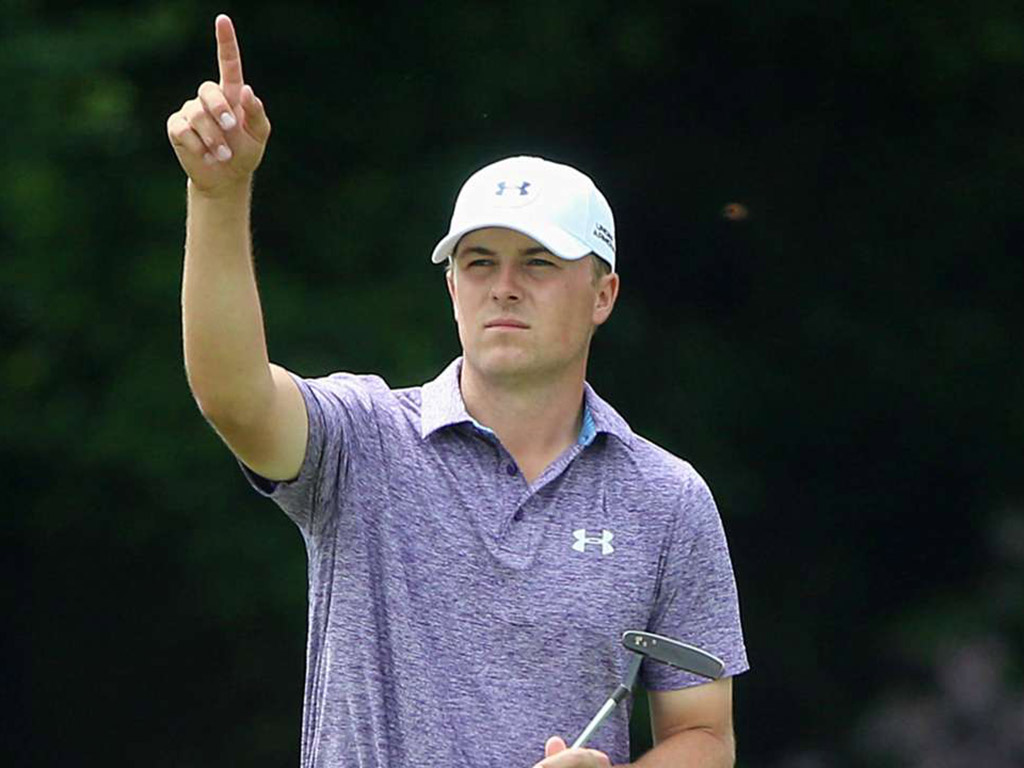
You recently saw one of the biggest tests of self belief you will ever see. Jordan Spieth, just 21 years old, stood alone on the Augusta National practice tee before the final round of the Masters with the opportunity to win golf’s biggest prize and potentially change history.
Spieth was about to make the final walk to the first tee, through crowds of screaming people, and with his own voice reminding him that he was about to play the most important round of golf he’s ever played.
How can a 21 year old pull off something that would make most gag, choke and stumble, and what can you learn from Jordan’s experience to make yourself a better golfer?
One of the key areas I work on with any athlete client (golfers included) is confidence: understanding it and building it. Confidence is a golfer’s bullet-proof vest. It was for Jordan Spieth on Sunday at the Masters and it can be for you.
What is Confidence?
Well, it’s a feeling. It’s about trust and belief in your abilities and decisions, and expressing those beliefs and decisions in challenging circumstances.
You know the feeling of confidence. You’re playing great and everything is going right for you. There is an easy belief in what you are doing. You also know the other feeling. You just don’t have it and nothing is going right. There’s little faith in what you are doing.
“I’ve Lost My Confidence”
When my phone rings, leading athletes or agents are sometimes on the other end. They or their player has “lost their confidence.” If it’s a golfer, the putter has gone cold and the ball’s not going in, or they can’t take their game from the practice tee to the course. They tell me there is little belief in what they are doing when it counts.
I always ask these players where they think their confidence has gone. Most are in the top professional leagues in the world and have risen to the upper echelon of their profession. It’s funny that these players don’t really know where the belief has gone. Something small has triggered some little doubts and the downward spiral begins from there.
This is where golfers get confused. Confidence requires some understanding, and some work. Sports, like life, are about patterns and cycles. Sometimes you “have it” and other times you don’t. No exceptions. So you must work on important areas like confidence and understand how to build it and how to find it. The mental/emotional game is like your physical practice. Do the work and it will pay off.
Is Your Confidence Proactive or Reactive?
So here’s a perspective of confidence I work on with leading players, helping them understand that maintaining confidence is within their control; and confidence is more of a choice than they know. They must take responsibility for their own confidence.
And this perspective can help you.
Great athletes are proactive with their confidence. When Jordan Spieth was walking to the first tee at Augusta before the final round, you can be sure he was reminding himself that he was playing great in 2015. He had built the foundation since he was 12 years old to handle a lead at The Masters on Sunday.
Proactive confidence is a decision that you will be sustainably confident from all of the great, positive experiences you have had in the game (and there will be many). All the work you have done on your game and the coaching and support from others is the foundation of your belief in yourself as a golfer. Your confidence will not be shaken by small, unavoidable cycles of not your best play.
On the other hand…
Some players insist on sabotaging their own belief in themselves. Reactive confidence is a decision that one small collection of challenging circumstances or difficulties will overcome your successes and support and crack your golf “foundation.” In this scenario, you declare that your confidence is shaken by small failures.
I don’t know how many times I have heard a great athlete declare after a stretch of poor play that their confidence is gone. Really? Where does it go? Golfers also allow others to have an impact on their confidence in a negative way — coaches, parents, other players. Reactive confidence is essentially a choice to lower your confidence and allow challenges and other distractions to penetrate your foundation.
Does this sound familiar to you?

Spieth failed to close the 2014 Masters, shooting a final-round 72 and lost to Bubba Watson by three strokes. 2015 was a different story.
I see this everyday, even among the best athletes in the world. For some reason, they aren’t playing well and the foundation of confidence they have built over years suddenly disappears. A few mistakes become the basis for their confidence. After some reminders that their confidence is about everything they have achieved and all the work they’ve done, there is an “ah ha” moment and confidence mysteriously returns! The decision is made by the player to recover it. They take responsibility for their confidence.
This is important for you to know. If you can feel confidence slipping away, you have the choice to reel it in and not allow emotions to run the show.
Building Your Confidence
It’s important to continually build the foundation so small, short-term failures will not penetrate your long-term foundation. So what can you do to work on your confidence and build it?
Here are a few key ideas that you can use to build the foundation and create belief in your game:
- Preparation. “Build it and it will come.” It is a secure feeling on the first tee. You know you’ve put the work and effort in each part of your game to deal with the shots you’ll need on the course. Make your practice functional, and related to the shots you’ll need on the course or in competition. Have a plan. Keep it simple.
- Be proactive and allow all the great experiences you’ve had in the game to be the foundation of your confidence. Decide that temporary low points in your game will pass quickly and will not have any impact on your “foundation.”
- Understand your strengths, limitations and triggers very well. It’s easier to win believing in something you understand versus something you don’t. Jordan Spieth believed in Jordan Spieth’s ability to play Augusta. The results followed.
- Get great coaching matched up to your values and needs. The greatest thing a coach can do for a player is believe in them and believe in their abilities, bolstering their own confidence. A great coach’s belief in you can matter.
- Create a clear and defined goal plan. If you know where you are going and have the step in place to get there, there will be a sense of security that you are on the right track.
- Create a positive, supportive internal voice. Your own voice should be the most supportive and create a positive internal environment. A negative voice can erode confidence in your abilities and create doubt in your capabilities.
- Focus on your good shots, not the bad ones. Ben Hogan, the greatest ball-striker of all-time, felt he only hit about five or six shots in a round that were great. Ben had many misses and so will you. Focus on your good shots and accept there will be many misses.
- Focus on your development as a player and the process to reach the next level. Focusing on a very solid process will inevitably lead to great results.
Working on your confidence is an investment in you as a golfer, but this skillset is transferable to everything you do in life: business, career, relationships and any other “performance” activity you engage in.
Consider it an investment in your future.
Instruction
The Wedge Guy: Beating the yips into submission

There may be no more painful affliction in golf than the “yips” – those uncontrollable and maddening little nervous twitches that prevent you from making a decent stroke on short putts. If you’ve never had them, consider yourself very fortunate (or possibly just very young). But I can assure you that when your most treacherous and feared golf shot is not the 195 yard approach over water with a quartering headwind…not the extra tight fairway with water left and sand right…not the soft bunker shot to a downhill pin with water on the other side…No, when your most feared shot is the remaining 2- 4-foot putt after hitting a great approach, recovery or lag putt, it makes the game almost painful.
And I’ve been fighting the yips (again) for a while now. It’s a recurring nightmare that has haunted me most of my adult life. I even had the yips when I was in my 20s, but I’ve beat them into submission off and on most of my adult life. But just recently, that nasty virus came to life once again. My lag putting has been very good, but when I get over one of those “you should make this” length putts, the entire nervous system seems to go haywire. I make great practice strokes, and then the most pitiful short-stroke or jab at the ball you can imagine. Sheesh.
But I’m a traditionalist, and do not look toward the long putter, belly putter, cross-hand, claw or other variation as the solution. My approach is to beat those damn yips into submission some other way. Here’s what I’m doing that is working pretty well, and I offer it to all of you who might have a similar affliction on the greens.
When you are over a short putt, forget the practice strokes…you want your natural eye-hand coordination to be unhindered by mechanics. Address your putt and take a good look at the hole, and back to the putter to ensure good alignment. Lighten your right hand grip on the putter and make sure that only the fingertips are in contact with the grip, to prevent you from getting to tight.
Then, take a long, long look at the hole to fill your entire mind and senses with the target. When you bring your head/eyes back to the ball, try to make a smooth, immediate move right into your backstroke — not even a second pause — and then let your hands and putter track right back together right back to where you were looking — the HOLE! Seeing the putter make contact with the ball, preferably even the forward edge of the ball – the side near the hole.
For me, this is working, but I am asking all of you to chime in with your own “home remedies” for the most aggravating and senseless of all golf maladies. It never hurts to have more to fall back on!
Instruction
Looking for a good golf instructor? Use this checklist

Over the last couple of decades, golf has become much more science-based. We measure swing speed, smash factor, angle of attack, strokes gained, and many other metrics that can really help golfers improve. But I often wonder if the advancement of golf’s “hard” sciences comes at the expense of the “soft” sciences.
Take, for example, golf instruction. Good golf instruction requires understanding swing mechanics and ball flight. But let’s take that as a given for PGA instructors. The other factors that make an instructor effective can be evaluated by social science, rather than launch monitors.
If you are a recreational golfer looking for a golf instructor, here are my top three points to consider.
1. Cultural mindset
What is “cultural mindset? To social scientists, it means whether a culture of genius or a culture of learning exists. In a golf instruction context, that may mean whether the teacher communicates a message that golf ability is something innate (you either have it or you don’t), or whether golf ability is something that can be learned. You want the latter!
It may sound obvious to suggest that you find a golf instructor who thinks you can improve, but my research suggests that it isn’t a given. In a large sample study of golf instructors, I found that when it came to recreational golfers, there was a wide range of belief systems. Some instructors strongly believed recreational golfers could improve through lessons. while others strongly believed they could not. And those beliefs manifested in the instructor’s feedback given to a student and the culture created for players.
2. Coping and self-modeling can beat role-modeling
Swing analysis technology is often preloaded with swings of PGA and LPGA Tour players. The swings of elite players are intended to be used for comparative purposes with golfers taking lessons. What social science tells us is that for novice and non-expert golfers, comparing swings to tour professionals can have the opposite effect of that intended. If you fit into the novice or non-expert category of golfer, you will learn more and be more motivated to change if you see yourself making a ‘better’ swing (self-modeling) or seeing your swing compared to a similar other (a coping model). Stay away from instructors who want to compare your swing with that of a tour player.
3. Learning theory basics
It is not a sexy selling point, but learning is a process, and that process is incremental – particularly for recreational adult players. Social science helps us understand this element of golf instruction. A good instructor will take learning slowly. He or she will give you just about enough information that challenges you, but is still manageable. The artful instructor will take time to decide what that one or two learning points are before jumping in to make full-scale swing changes. If the instructor moves too fast, you will probably leave the lesson with an arm’s length of swing thoughts and not really know which to focus on.
As an instructor, I develop a priority list of changes I want to make in a player’s technique. We then patiently and gradually work through that list. Beware of instructors who give you more than you can chew.
So if you are in the market for golf instruction, I encourage you to look beyond the X’s and O’s to find the right match!
Instruction
What Lottie Woad’s stunning debut win teaches every golfer

Most pros take months, even years, to win their first tournament. Lottie Woad needed exactly four days.
The 21-year-old from Surrey shot 21-under 267 at Dundonald Links to win the ISPS Handa Women’s Scottish Open by three shots — in her very first event as a professional. She’s only the third player in LPGA history to accomplish this feat, joining Rose Zhang (2023) and Beverly Hanson (1951).
But here’s what caught my attention as a coach: Woad didn’t win through miraculous putting or bombing 300-yard drives. She won through relentless precision and unshakeable composure. After watching her performance unfold, I’m convinced every golfer — from weekend warriors to scratch players — can steal pages from her playbook.
Precision Beats Power (And It’s Not Even Close)
Forget the driving contests. Woad proved that finding greens matters more than finding distance.
What Woad did:
• Hit it straight, hit it solid, give yourself chances
• Aimed for the fat parts of greens instead of chasing pins
• Let her putting do the talking after hitting safe targets
• As she said, “Everyone was chasing me today, and managed to maintain the lead and played really nicely down the stretch and hit a lot of good shots”
Why most golfers mess this up:
• They see a pin tucked behind a bunker and grab one more club to “go right at it”
• Distance becomes more important than accuracy
• They try to be heroic instead of smart
ACTION ITEM: For your next 10 rounds, aim for the center of every green regardless of pin position. Track your greens in regulation and watch your scores drop before your swing changes.
The Putter That Stayed Cool Under Fire
Woad started the final round two shots clear and immediately applied pressure with birdies at the 2nd and 3rd holes. When South Korea’s Hyo Joo Kim mounted a charge and reached 20-under with a birdie at the 14th, Woad didn’t panic.
How she responded to pressure:
• Fired back with consecutive birdies at the 13th and 14th
• Watched Kim stumble with back-to-back bogeys
• Capped it with her fifth birdie of the day at the par-5 18th
• Stayed patient when others pressed, pressed when others cracked
What amateurs do wrong:
• Get conservative when they should be aggressive
• Try to force magic when steady play would win
• Panic when someone else makes a move
ACTION ITEM: Practice your 3-6 foot putts for 15 minutes after every range session. Woad’s putting wasn’t spectacular—it was reliable. Make the putts you should make.
Course Management 101: Play Your Game, Not the Course’s Game
Woad admitted she couldn’t see many scoreboards during the final round, but it didn’t matter. She stuck to her game plan regardless of what others were doing.
Her mental approach:
• Focused on her process, not the competition
• Drew on past pressure situations (Augusta National Women’s Amateur win)
• As she said, “That was the biggest tournament I played in at the time and was kind of my big win. So definitely felt the pressure of it more there, and I felt like all those experiences helped me with this”
Her physical execution:
• 270-yard drives (nothing flashy)
• Methodical iron play
• Steady putting
• Everything effective, nothing spectacular
ACTION ITEM: Create a yardage book for your home course. Know your distances to every pin, every hazard, every landing area. Stick to your plan no matter what your playing partners are doing.
Mental Toughness Isn’t Born, It’s Built
The most impressive part of Woad’s win? She genuinely didn’t expect it: “I definitely wasn’t expecting to win my first event as a pro, but I knew I was playing well, and I was hoping to contend.”
Her winning mindset:
• Didn’t put winning pressure on herself
• Focused on playing well and contending
• Made winning a byproduct of a good process
• Built confidence through recent experiences:
- Won the Women’s Irish Open as an amateur
- Missed a playoff by one shot at the Evian Championship
- Each experience prepared her for the next
What this means for you:
• Stop trying to shoot career rounds every time you tee up
• Focus on executing your pre-shot routine
• Commit to every shot
• Stay present in the moment
ACTION ITEM: Before each round, set process goals instead of score goals. Example: “I will take three practice swings before every shot” or “I will pick a specific target for every shot.” Let your score be the result, not the focus.
The Real Lesson
Woad collected $300,000 for her first professional victory, but the real prize was proving that fundamentals still work at golf’s highest level. She didn’t reinvent the game — she simply executed the basics better than everyone else that week.
The fundamentals that won:
• Hit more fairways
• Find more greens
• Make the putts you should make
• Stay patient under pressure
That’s something every golfer can do, regardless of handicap. Lottie Woad just showed us it’s still the winning formula.
FINAL ACTION ITEM: Pick one of the four action items above and commit to it for the next month. Master one fundamental before moving to the next. That’s how champions are built.
PGA Professional Brendon Elliott is an award-winning coach and golf writer. You can check out his writing work and learn more about him by visiting BEAGOLFER.golf and OneMoreRollGolf.com. Also, check out “The Starter” on RG.org each Monday.
Editor’s note: Brendon shares his nearly 30 years of experience in the game with GolfWRX readers through his ongoing tip series. He looks forward to providing valuable insights and advice to help golfers improve their game. Stay tuned for more Tips!



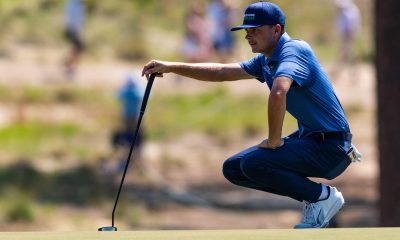

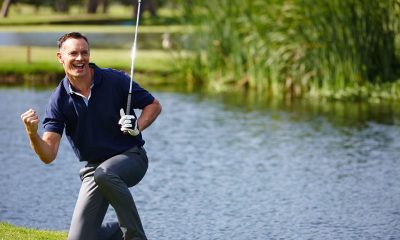

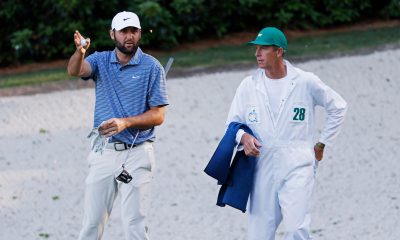



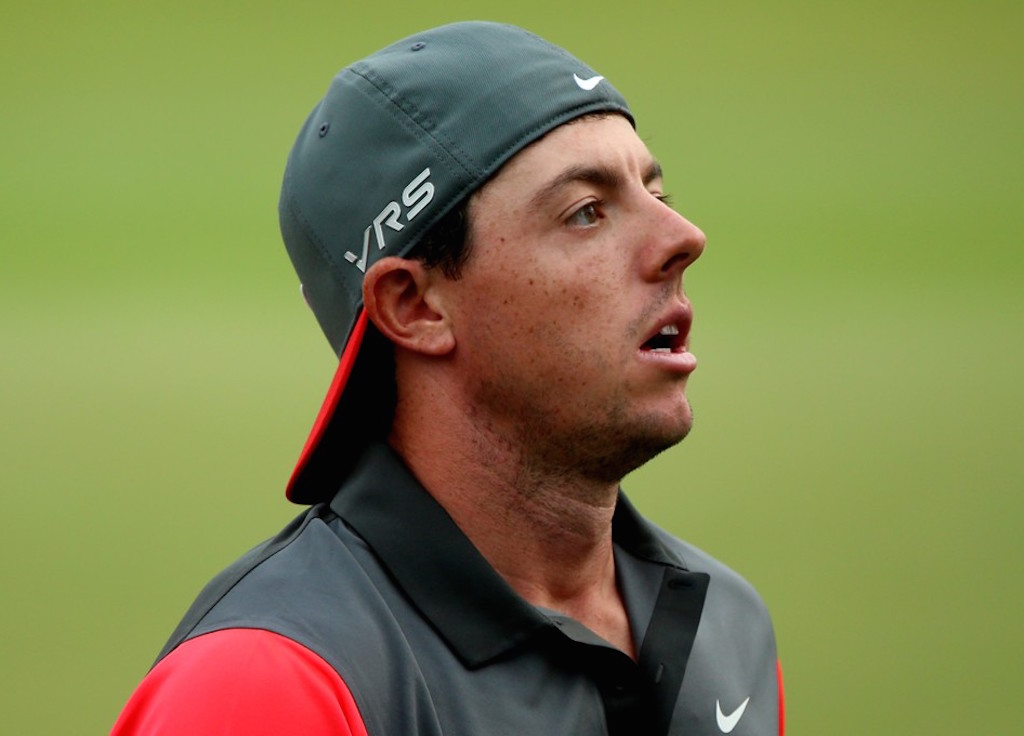








Pingback: Master the Mental Game of Golf: Unlock Your True Potential – linkedgreens
James Fairbank
Apr 25, 2015 at 6:33 pm
Sigh. Another “psychology” article, written by a non-licensed psychologist. This is effectively equivalent to someone who has an interest in medicine giving medical advice online. Behavioural and cognitive change is incredibly difficult, and no article written online will be enough to eliminate long-standing patterns – especially without individualized and formalized assessment to understand the root of the issue. I guess this is why people such as Marcus above think psychology is a “bogus” science (which couldn’t be further from the truth).
John Haime
Apr 27, 2015 at 3:07 pm
Hi James,
Sports Psychology and clinical psychology are very far away from each other. Often, the very best “sports psychologists” are coaches who communicate well, understand the psyche and motivations of an athlete. As an example, John Wooden was a farmer from Indiana with an English degree from Purdue – but his mental/emotional/spiritual platform for athletes was exceptional and he got incredible results – producing great athletes and great people.
This is a long discussion so I won’t continue at length but I will tell you I hire students from sports psychology programs often and most do not generate results and help the athlete reach their goals. The real world of getting results with athletes and the academic world of fluffy theories are very, very different. Most athletes want someone who has been there done that at the highest levels in sports and can relate to their challenges, feelings and pressures. To turn your argument around – how can anyone who doesn’t have significant experience in sports competition, know the feelings or felt the pressure practically understand someone who has?
FYI – People today want short, sharp well written content that will give them ideas and help them. It may also be the catalyst to explore further and gain real, long-term results. This is the value of WRX. Great content that can be consumed in a short period, entertain and give people ideas they can further explore or work on. Great communication and connection with athletes can generate results in a short time – I do it everyday and see athletes make major jumps to bigger heights in professional sports, college scholarships and great performances. My objective is always sustainability and creating an independent athlete/person.
Sports Psychology is much more about coaching, development and motivation and not about clinical psychology – clinical psychologists assess and treat people with psychological problems. They may act as therapists for people experiencing normal psychological crises (e.g., grief) or for individuals suffering from chronic psychiatric disorders. I periodically deal with athletes who have deep rooted emotional problems and professional therapy may be necessary – but that is rare.
I hope this explanation helps. The only thing that matters is results. Education gets the foot in the door – but the professional and elite athletes I work with aren’t interested in letters after a name – they want to develop, grow and get results.
I hope this adds value to the conversation.
The best to you and here’s to great golf!!
John
marcus
Apr 17, 2015 at 9:51 am
This is a great article. And I think psychology is largely a bogus science. But John Halme makes valid points here for sure.
Andy
Apr 16, 2015 at 2:14 pm
A huge part of great coaching is creating an environment allowing the player to reach thier potential. This can be done by the parents or high school coaching or other. I too had aspirations of professional baseball, but bad coaching actually derailed that dream. And funny thing, this happened at the same high school Spieth went to only 40 years ago.
Philip
Apr 16, 2015 at 12:54 pm
The only aspect I disagree somewhat with is “Get great coaching” as you described it. If the “greatest thing a coach can do for a player is believe in them and believe in their abilities, bolstering their own confidence” then I say the player has not reached a true level of self-confidence and is still relying on an artificial crutch. Of course, maybe the whole point is we all need a fail back whenever we falter and cannot seem to rise again. I suspect for many PGA professionals that great coach is their spouse and children to a large degree.
John Haime
Apr 21, 2015 at 1:57 pm
Hey Philip,
Great point – but would like to add something here to help.
I agree with you that at some point athletes must be responsible for their own confidence – but his comes later. When athletes are young and developing their “foundation” of confidence, it is critical for coaches to believe in them and help them develop this confidence. Trust me, working with athletes everyday, there are issues with athletes related to coaches who do not build this confidence and in fact damage the psyche of the athlete. So, at young ages, the best thing a coach can do is care about the athlete and believe in them. This gives a young athlete permission to believe in themselves.
Later on, when the foundation has be primarily built, athletes must be responsible for their own confidence. Negative impact of coaches etc. should not “penetrate” this foundation.
Make sense?
Thanks for your comment!!